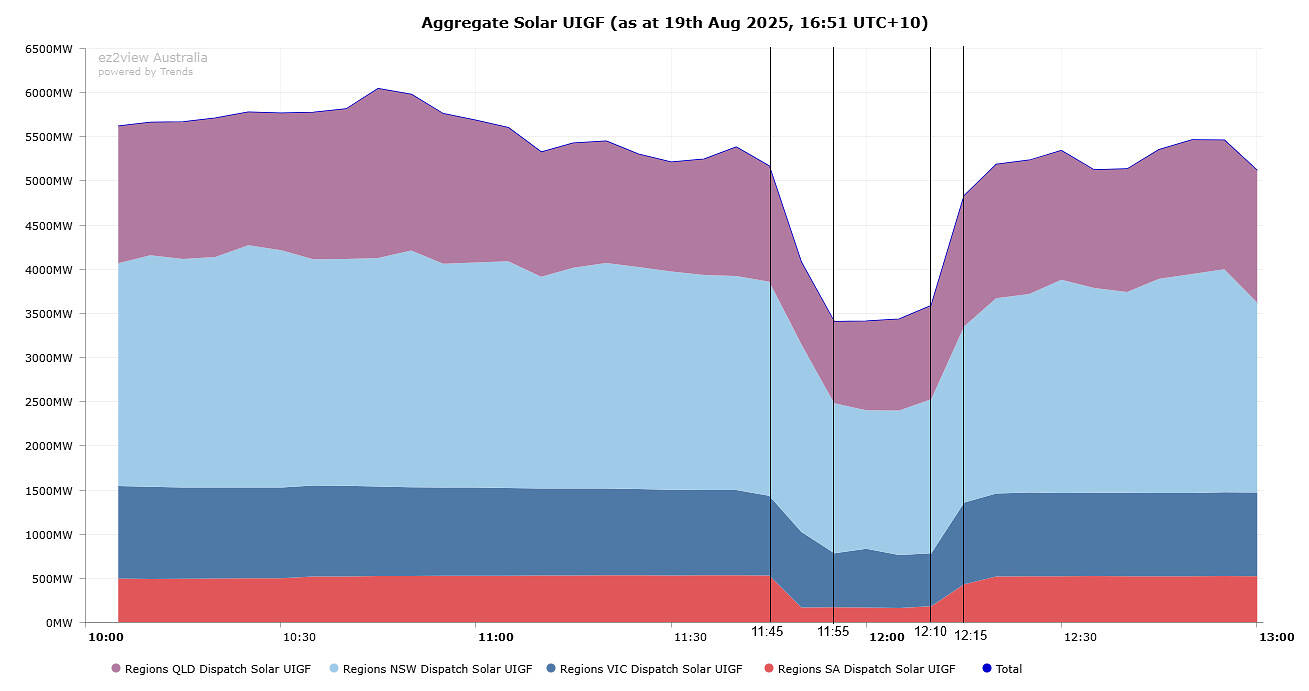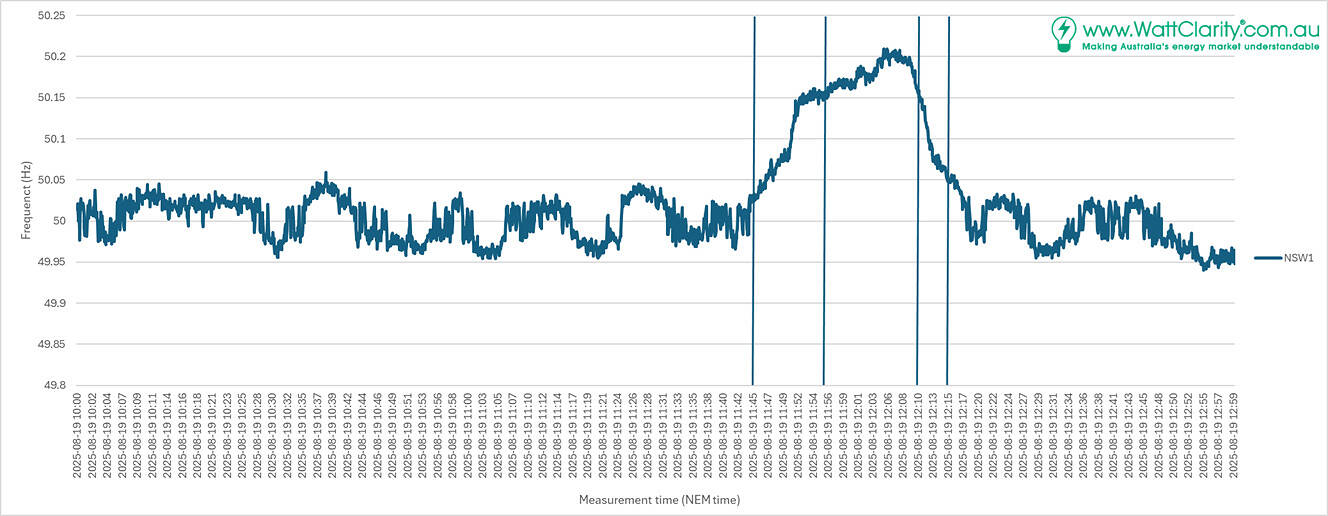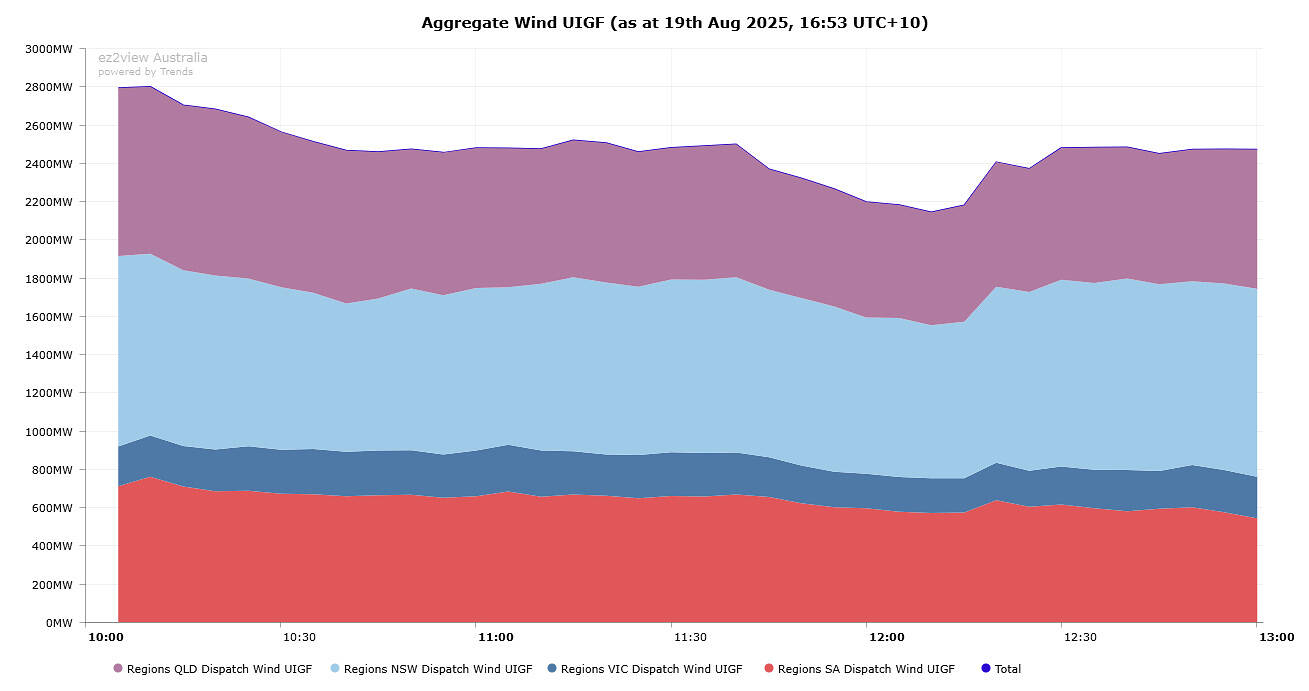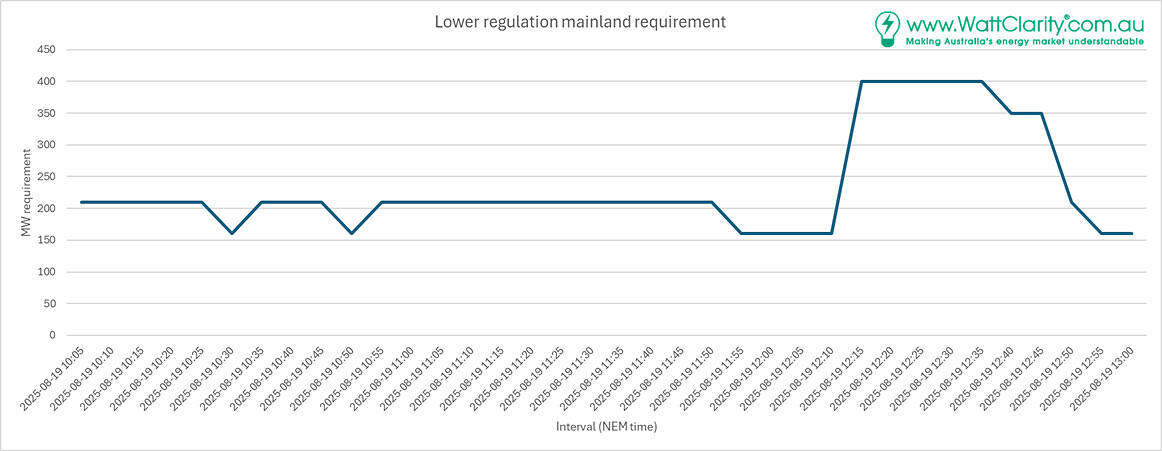In the first article, Mainland Frequency Spikes to 50.2 on Tue 19th August 2025, we noted that mainland system frequency experienced a large deviation from 50 Hz.
The upper normal operating frequency band is 50.15 Hz. System readings from mainland regions were outside this range for some time.
We don’t yet know generating unit output but we can seek to identify anomalous data at the NEM region-level.
Sequence of events
Firstly, a sequence of events as we’ve observed them, which may be expanded as more information comes to light.
| Time on 19th August 2025 | Event |
| 11:44 | Frequency in NSW is 50.027 Hz (outside PFR deadband) |
| 11:52:44 | Frequency is 50.151 Hz, the first departure outside the NOFB. |
| 12:05:28 | Frequency is 50.209 Hz. The peak from NSW measurements using 4-second data. |
| 12:11:08 | Frequency drops below the NOFB. |
| 12:10 – 12:35 | The mainland requirement for Lower Reg is 400 MW. |
| 12:35 – 1245 | The mainland enablement for Lower Reg is 350 MW from mainland regions. 50 is supplied from TAS. |
VRE
Solar and wind unit availability (the UIGF) is used in dispatch to inform upper bounds on dispatch targets.
If the UIGF drops, dispatch targets can be expected to drop. Frequency could be pushed high if units don’t follow the reduced targets.
Solar UIGF
In the following annotated chart we can observe how the total (mainland regions) UIGF dropped from the 11:45 to the 11:55 dispatch interval. Possibly a data glitch?
Four intervals were spent at the lower level of total UIGF (to 12:10) before the values adjusted to levels seen prior to the event by the 12:15 interval.
The drop between 11:45 to 11:55 is 5,167 to 3,406 MW, roughly 1,760 MW.
We can align the changes in UIGF with changes in frequency (the same times are annotated using vertical lines).
Wind UIGF
The following chart captures the UIGFs of the wind fleet.
While a dip at the same time as the solar UIGF dip is evident, the magnitude is not as large.
The drop between 11:45 to 11:55 is 2,368 to 2,266 MW – roughly 100 MW.
Observations from conformance notices
A number of non conformance notices were raised. The roles of individual units will require more digging and the actual unit output will be of use (next-day public).
Some units appear to have deviated to the low side of their targets. These may have helped frequency and been in response to PFR, regulation or contingency FCAS settings. Others appear to have deviated above target (if and when a semi-dispatch cap was applicable) and these may have contributed to the frequency deviation.
Increased regulation lower requirements on the Mainland
Following the market notice about varying the mainland regulation requirement, we find the mainland requirement was indeed raised to 400 MW from the typical level of 210 MW. Towards the end of the period TAS enablement of 50 MW appears to have supported mainland needs being met from enablement of 350 MW.






Leave a comment